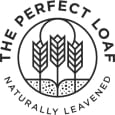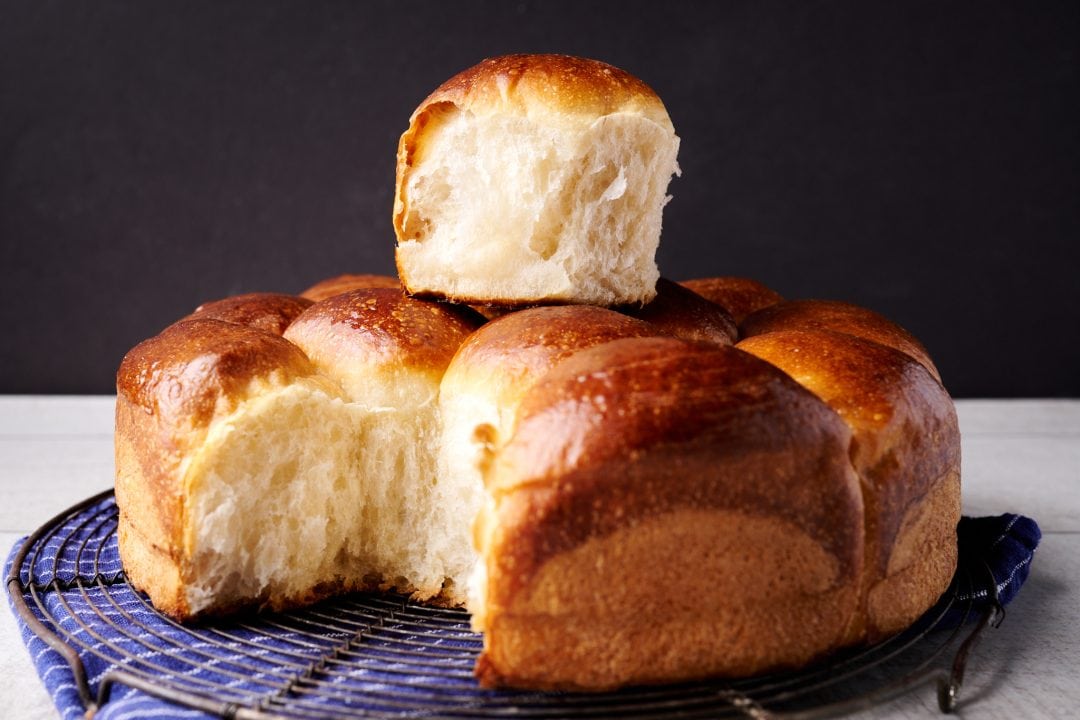In this how to make tangzhong guide, we’ll look at a method for bringing extra tenderness and keeping quality to your sourdough bread by pre-cooking a portion of the flour. Pre-cooking some of the flour and liquid in your formula gelatinizes the starches in the flour, transforming the two ingredients into a viscous paste that’s then added directly to your bread dough.
The remarkable thing about tangzhong, also called yudane or water roux, is how the overall dough hydration can be kept relatively low, with fewer fats and oils, and still result in incredibly tender bread. In this guide on making a tangzhong, we’ll look at what flour types you can use for the roux, what liquids, and a few different methods to cook the flour and mix it into your bread dough.
Real quick: What are the Benefits of Tangzhong?
- Adds tenderness and an open interior without the use of eggs, butter, or sugar
- The dough can have lower hydration but still achieve a soft texture
- The dough will feel stronger and more cohesive when mixing and handling, even at higher hydration
- Prolongs the shelf life of the bread and delays bread staling
- Because you can make tangzhong/yudane with water as the liquid, you can make it vegan
What is Tangzhong?
Tangzhong, also called yukone in Japan, is an Asian technique that calls for pre-cooking a portion of the raw flour in a recipe with a liquid (usually water or milk) until it forms a paste. Then, this paste can be added to dough, resulting in bread that’s tenderer, more fluffy, and lasts longer before staling.
When the flour is cooked to approximately 150°F (65°C), the starches gelatinize as the liquid is absorbed into the starch, which swells as the mixture becomes more viscous and gel-like. This gelatinization is similar to how the exterior of a bagel gelatinizes during boiling. When you do this, the process irreversibly turns the mixture into a sticky starch paste that’s then added to the dough during mixing.
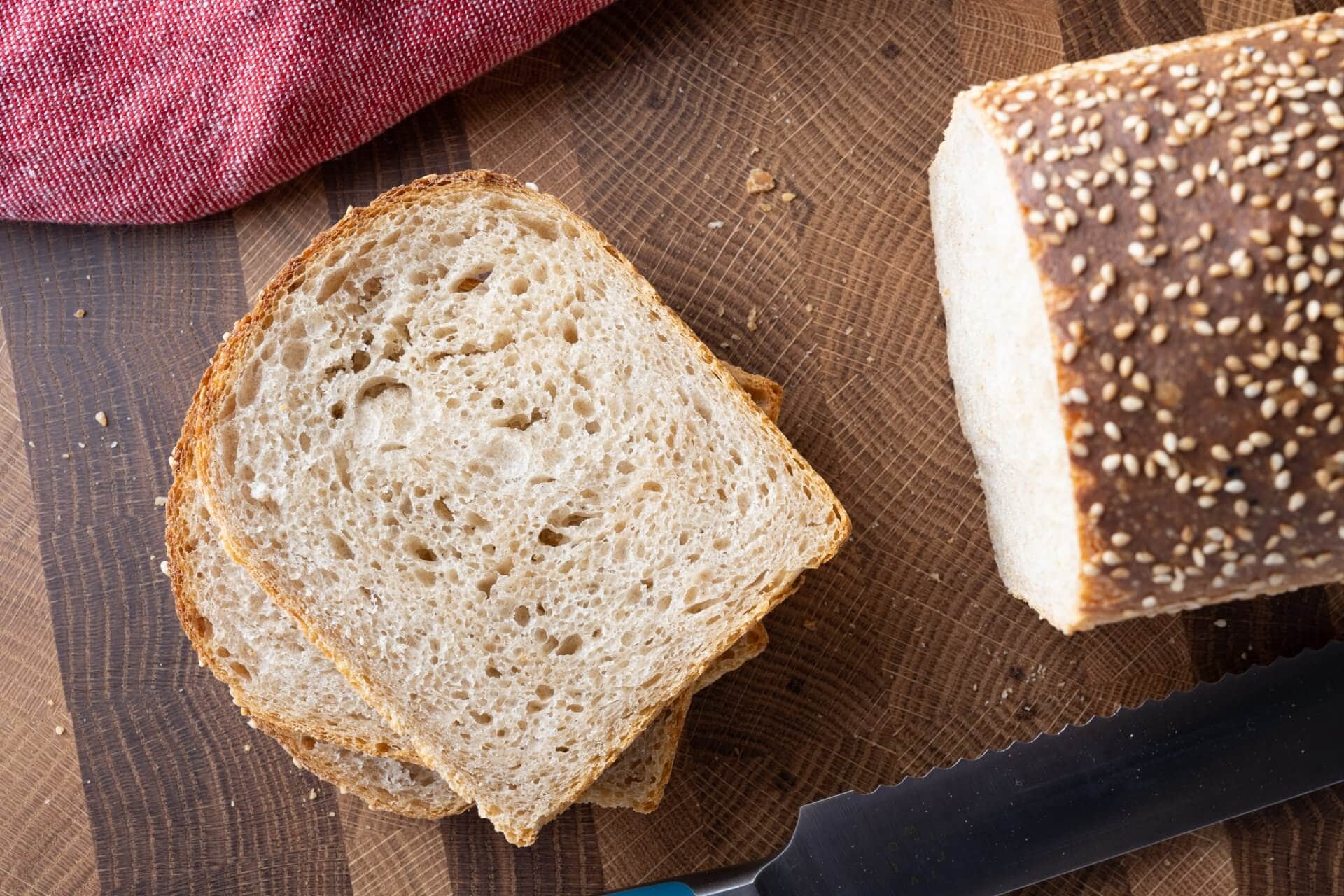
Sometimes, you’ll also see this technique called a “scald.” Often, this is used in German rye breads or modern sourdough recipes, such as our Light Deli Rye. Using rye and a liquid not only brings gelatenized starches but it amplifies the rye flavor in the final loaf.
What Does the Tangzhong Method Do?
Using the tangzhong method of pre-cooking some of the flour adds softness, tenderness, fluffiness, and better shelf life to baked goods like bread and pastry.
What is Yudane (and How is it Different From Tangzhong)?
Yudane is Japanese and essentially means roux (like tangzhong, Chinese). It has the same end goal: to gelatinize the starches in flour with a hot liquid. It differs from tangzhong in that you boil the liquid (usually water) and pour it directly over the flour, stirring to incorporate. After this, you let the mixture rest until it’s at room temperature before mixing it into your dough (or you can let it rest in the fridge until the next morning). At this point, you’ll take the mixture out, let it warm to room temperature, and mix it into your dough as needed.
The yudane method saves a little time since you don’t have to cook the flour at the stove, but it reaches the same end goal. In my experiments, I’ve not seen dramatically different results between the two methods. Because of this, I’ll talk about them interchangeably in this guide.
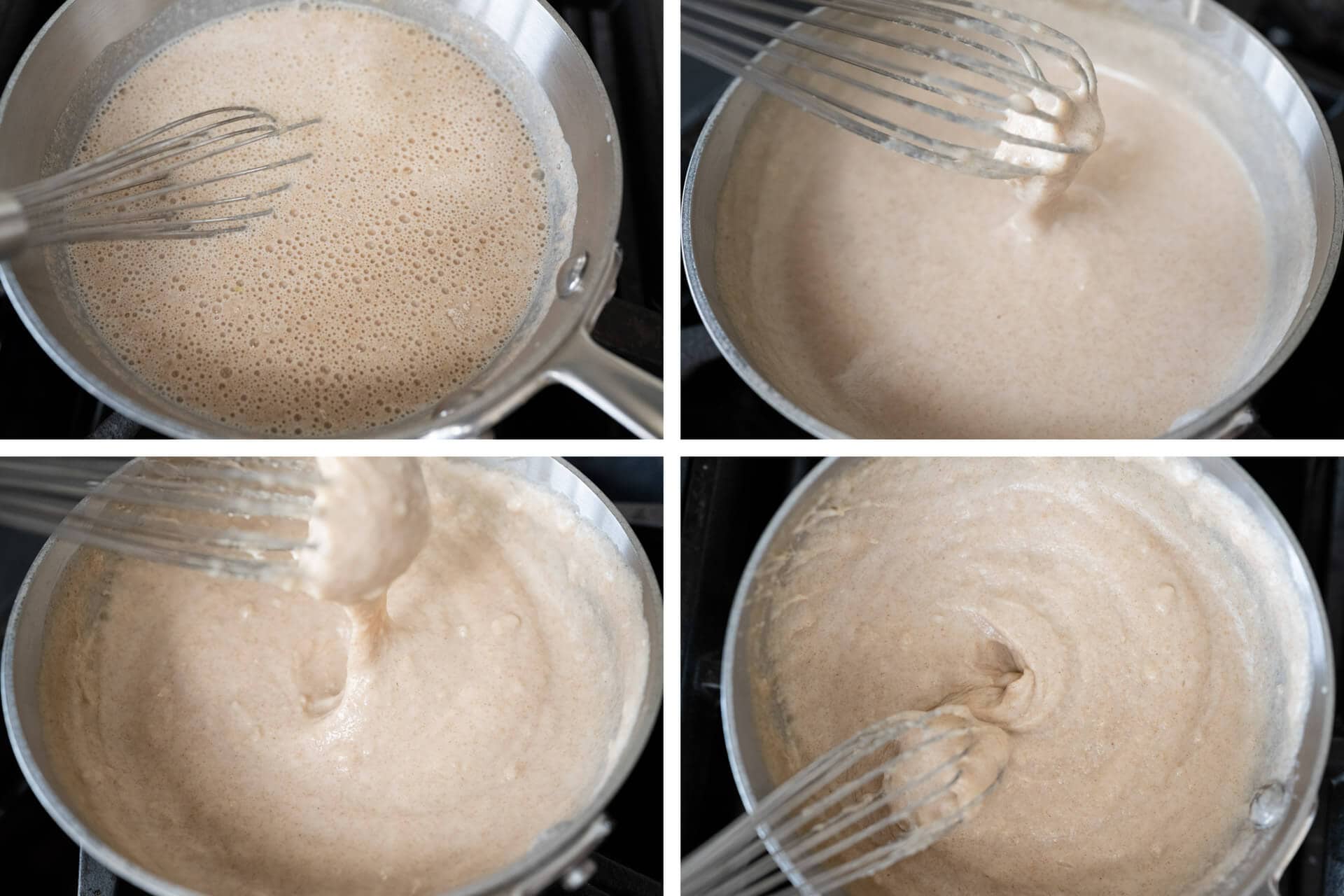
How to Make Tangzhong
The process to make tangzhong is very simple:
- Use 1 part flour to 5 parts liquid, by weight, and add it to a saucepan
- Heat the saucepan over medium heat, stirring often to prevent scorching, until the mixture thickens and reaches about 150°F (65°C)
- Let the roux cool and mix it directly into a dough as you would any other mix-in
Watch Me Use Tangzhong In This Bread Recipe
Watch me make my high-fiber sourdough sandwich bread using the tangzhong technique. In the video below, you’ll see to what consistency I cook the flour and liquid so it reaches a thick paste.
What Liquids Can Be Used for Tangzhong?
When using the tangzhong technique, whole cow’s milk is typically used, but you can also use 2% milk, lactose-free milk, and low-fat milk. Instead of dairy, you can use full-fat almond, oat, cashew, or other nut-based milk. You can also use water in place of milk.
What Flour Can be Used for Tangzhong?
To make tangzhong, you can use any white flour (all-purpose, high-protein white bread flour, or medium protein bread flour), whole wheat flour, Khorasan flour, einkorn flour, or whole-grain rye flour. Any flour that has sufficient starch can be used to make tangzhong or yudane.
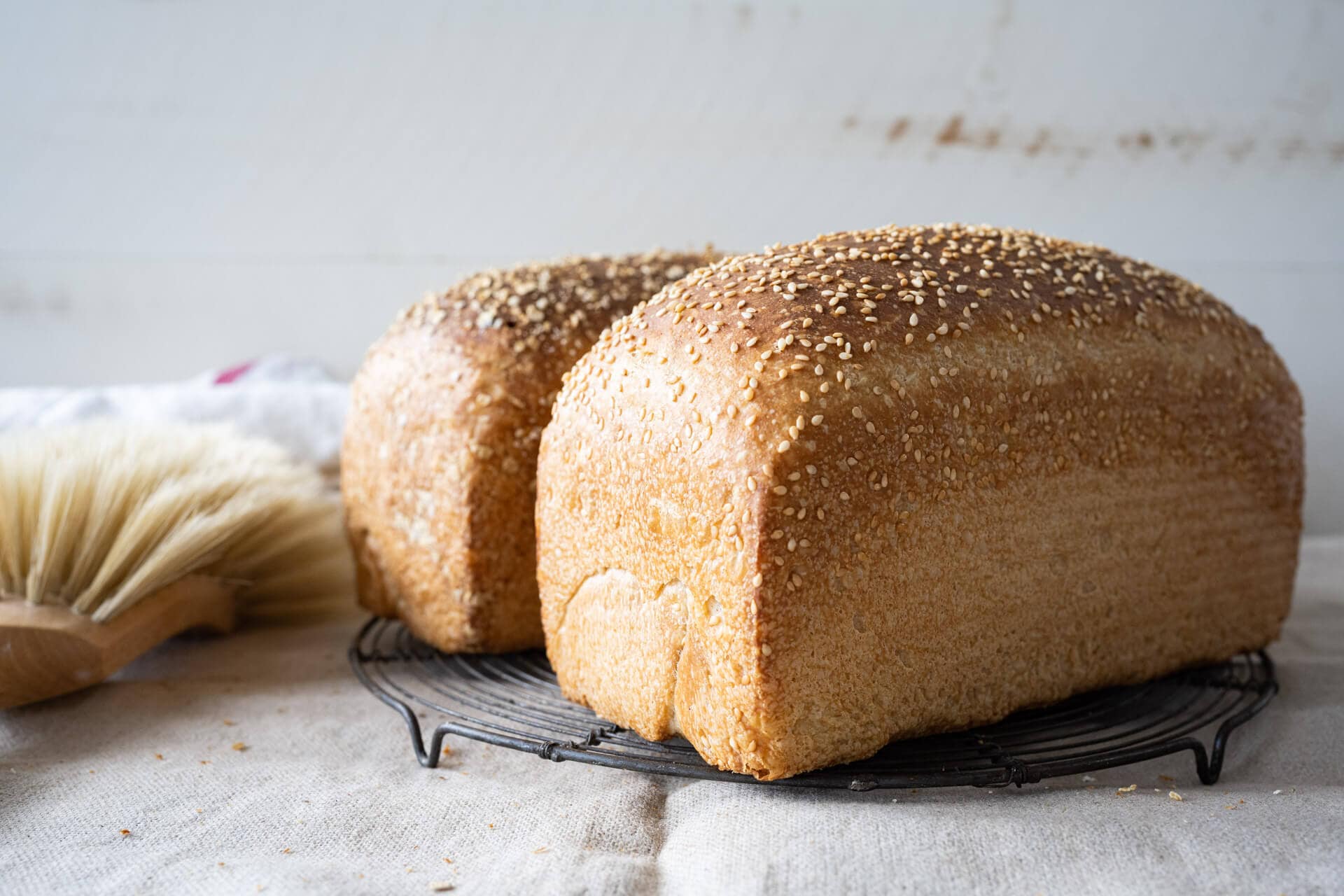
How Much Tangzhong Should I Use?
I’ve found using between 4% and 8% of the total flour in the recipe as a roux to be ideal. I think it’s possible to do percentages outside this range, but 8% has been my soft upper limit for my formulas.
Converting a Recipe to Use Tangzhong
When converting a recipe, take some flour and liquid from the recipe ingredients to make the roux. In other words, don’t add extra flour and a liquid to the bread formula for the roux. In doing this, you will change the ratio of ingredients (in baker’s percentages) in the formula.
When converting a recipe to using a tangzhong, you might notice the dough feels stiffer than it might have previously. This is because some of the once “free” liquid mixture into the dough is now bound up in the roux itself.
The Ideal Tangzhong Flour to Liquid Ratio
Tangzhong water to flour ratio
Tangzhong typically has a ratio near 1 part flour to 5 parts liquid (1:5), but this ratio is not absolute. I’ve used various ratios with varying success, and in my tangzhong sandwich bread, I use a ratio of 1 to 4 (74g flour to 296g milk, or 1:4). The additional liquid ensures it doesn’t burn and likely also accounts for evaporation.
Yudane water to flour ratio
Yudane typically has a ratio of 1 part liquid to 1 part flour (1:1).
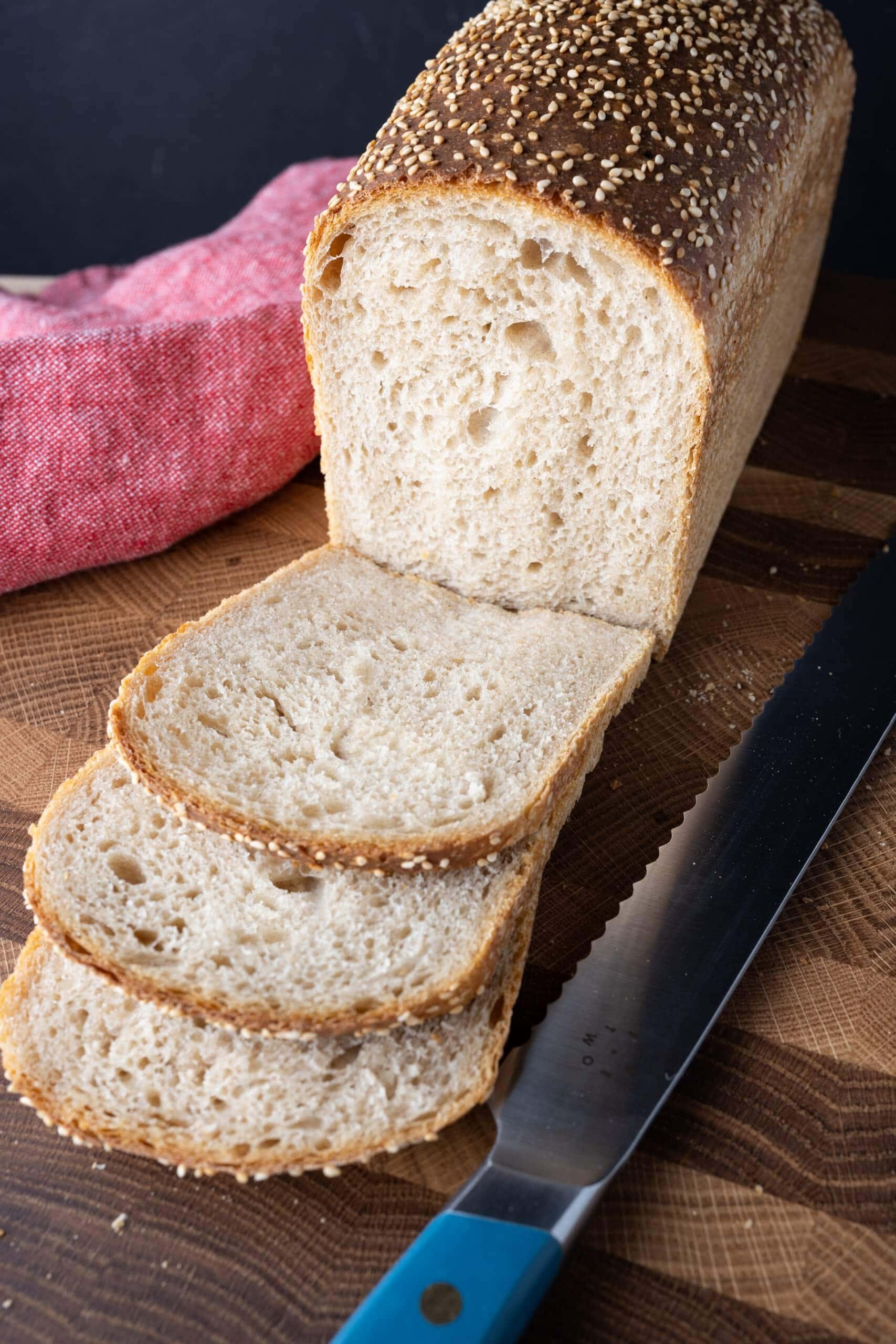
Preparing Tangzhong or Yudane Ahead of Time
When using tangzhong or yudane, it’s possible to make the mixture the night before or several hours ahead. Prepare the mixture by cooking over the stove or pouring boiling liquid over the flour, then set out to cool. Once slightly cool, cover the roux and place it in the refrigerator until needed.
I like to take it out of the refrigerator to come up to room temperature before mixing the tangzhong into my dough, but this is unnecessary. Ensure the added ingredient is considered when determining your final dough temperature.
Recommended reading: The Importance of Dough Temperature in Baking.
Print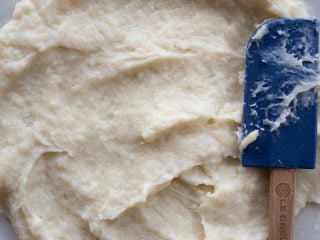
Basic Tangzhong
- Author: Maurizio Leo
- Prep Time: 5 minutes
- Cook Time: 10 minutes
- Total Time: 15 minutes
- Yield: 300g
- Category: Baking
- Cuisine: Asian
Description
Tangzhong is flour cooked with a liquid to create a gelatinous paste that brings softness, tenderness, and added shelf life to bread. This basic tangzhong can be used in almost any bread recipe. Be sure to use flour and liquid from the recipe to make this tangzhong.
Ingredients
- 50g flour (all-purpose, bread flour, whole wheat, whole rye, etc.)
- 250g whole milk (or a full-fat nut or oat milk, or water)
Instructions
- Add the flour and milk to a saucepan
- Heat the saucepan over medium heat, stirring often to prevent scorching, until the mixture thickens and reaches about 150°F (65°C)
- Let the mixture cool and mix it directly into a dough as you would any other mix-in
Notes
You can use any full-fat nut or oat milk in place of the water for a thicker tangzhong mixture.
You can use up to 8% of the total flour weight in a recipe to make the tangzhong.
If you need more tangzhong, be sure to keep the ratio 1 part flour to 5 parts liquid.
Tangzhong FAQs
Can I use the microwave to make tangzhong?
Yes. Combine the flour and water in a microwave-safe bowl and heat on high in the microwave until the mixture thickens, about 3 to 4 minutes. Keep an eye on the mixture as it’s heating to prevent splatter.
Why is Japanese Milk Bread so soft?
One of the reasons Japanese Milk Bread is so soft is because it uses the tangzhong technique of pre-cooking a portion of the flour. Adding tangzhong brings a high level of softness and tenderness to this enriched bread.
Which is better, tangzhong or yudane?
They are both effective ways to bring softness to any bread, but yudane is a little easier to prepare since there is no cooking involved. However, I find that tangzhong results in a slightly more tender bread because it ensures all of the flour is fully gelatinized through cooking.
Can I keep tangzhong in the refrigerator?
Yes, you can keep it up to 3 days in the refrigerator. After you’ve made the tangzhong, let it cool to room temperature, transfer to a bowl, cover, and place into the refrigerator.
Tangzhong Recipes To Try
I’ve used the tangzhong technique in many sourdough breads, and it brings ample softness and keeping quality to all of them. Check out any of the tangzhong recipes below to give this easy technique a try.
